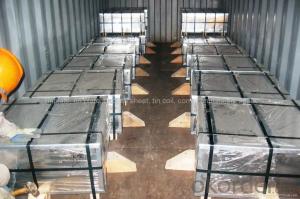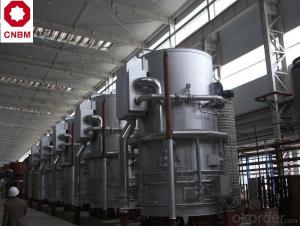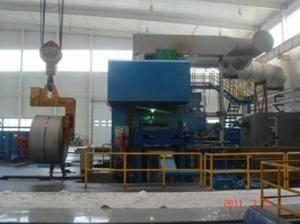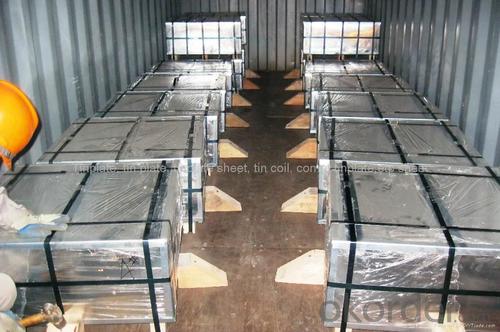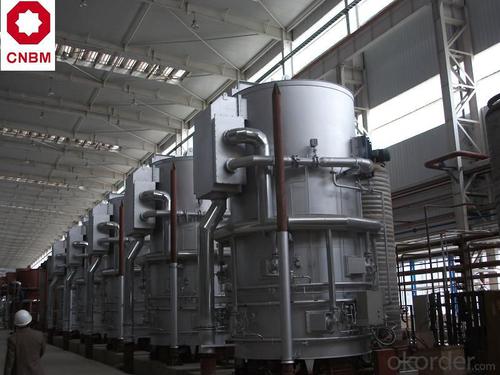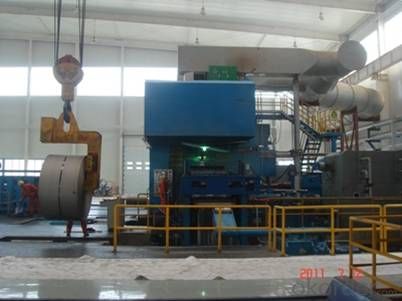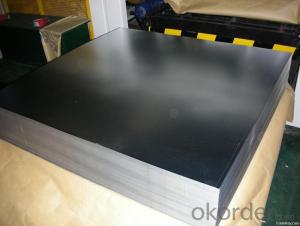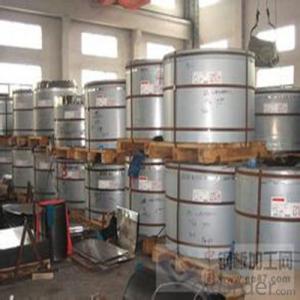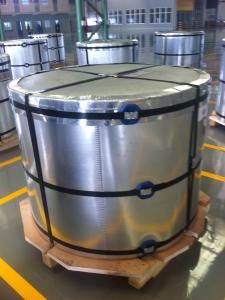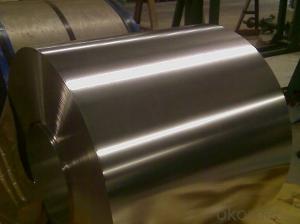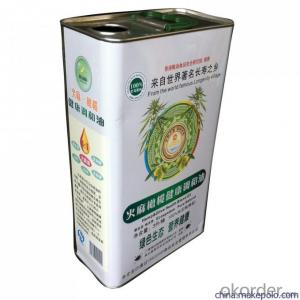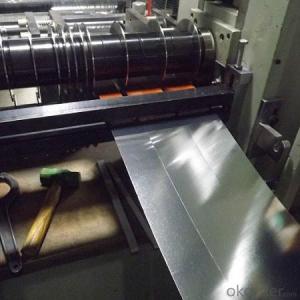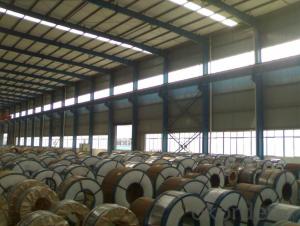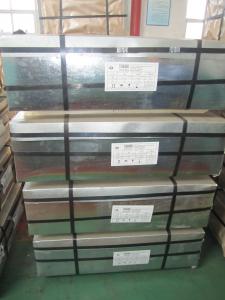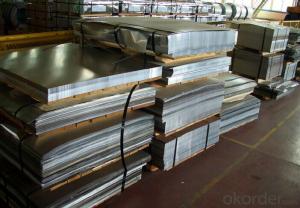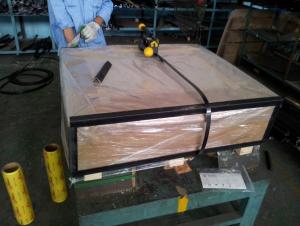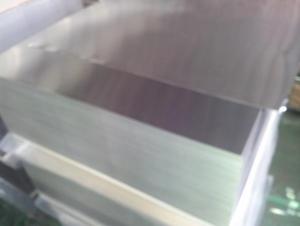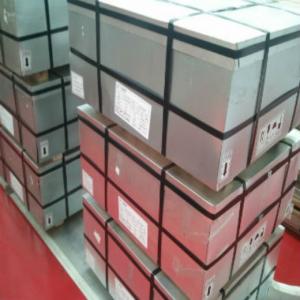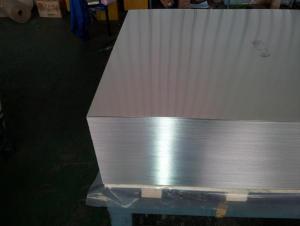Electrical Tinplate Manufacture, High Quality For Food Cans & Industrial Cans
- Loading Port:
- Tianjin
- Payment Terms:
- TT or LC
- Min Order Qty:
- 25 m.t.
- Supply Capability:
- 40000 m.t./month
OKorder Service Pledge
OKorder Financial Service
You Might Also Like
Specification
1.Brief Introduction
Tinplate is widely used for making all types of containers, containing industrial usage such as paint can, oil can, aerosol cans etc., and food cans like milk powder cans, tomato paste can, dry food cans etc.
2. Quality
As a state owned company and a large tinplate supplier in China, our tinplate quality ranks 1st level in China, similar to Bao Steel, Posco etc.
3. Specification
Standard | GB/T2520, JIS G3303, DIN EN10202 |
Material | MR /SPCC |
Thickness available | 0.16-0.50MM |
Width available | 600~1050MM |
Temper grade | T1 – DR8 |
Tin coating | ordinary 2.8g/2.8g, 5.6g/5.6g and others |
Package | sea worthy export package |
Applications | Tin can for chemicals & paint cans, industrial cans, food cans |
4. Our production steps
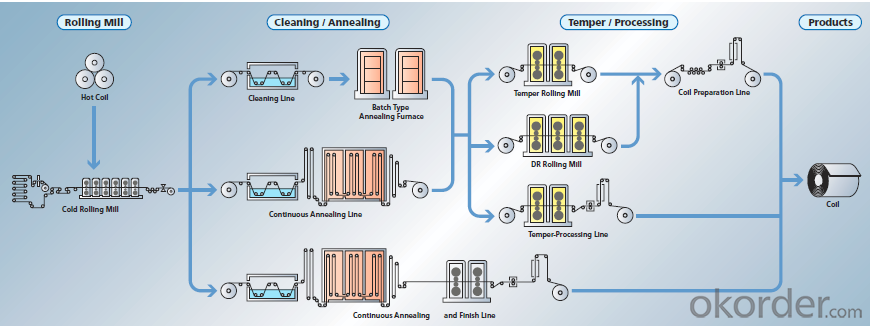
5. Usage Scope
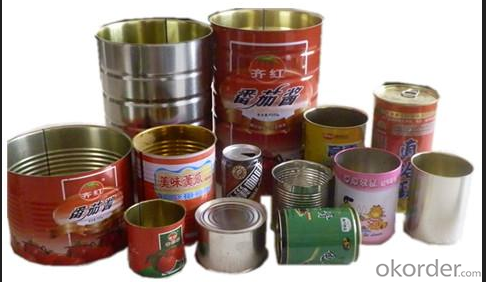
6. Our euxport market
our tinplate has been popularly exported to more than 30 countries, including Asia, Europe countries, Gulf area, Sounth America, Northe & South Afric etc.
7. FAQ
a. What’s the price difference between SPCC & MR?
Our MR is about usd 15~20/mt higher than SPCC; b. What’s the difference between SPCC & MR
They have difference element content, MR is better than SPCC in anti-rust and deep drawing.
Steel | C | Si | Mn | P | S | Cu | Others |
MR | ≤0.09 | ≤0.03 | ≤0.35 | ≤0.02 | ≤0.025 | ≤0.1 | ≤0.35 |
SPCC | ≤0.12 | ≤0.5 | ≤0.035 | ≤0.025 |
c. What production standards you accept?
We could accept production standards upon our customer request, such as JISG 3303, DIN EN10202, GB/T2520 etc. Our tinplate could meet these standards.
d. If we want to place order, is there any requirement about the booking time?
We need to purchase raw material in advance. Around date 20 per month our production plan will be finalized. So it’s better if customer could place order before date 20 per month, otherwise the delivery time will delay one month.
- Q: What are the different types of tinplate containers available?
- There are several different types of tinplate containers available, including cans, tins, boxes, and drums. These containers can come in various shapes and sizes, and they are often used for packaging food, beverages, chemicals, and other products. Tinplate containers are known for their durability and ability to protect the contents from external factors such as light, air, and moisture.
- Q: How does tinplate contribute to the overall tamper-evident packaging?
- Tinplate contributes to the overall tamper-evident packaging by providing a strong and durable material that can be easily sealed and remains intact when tampering is attempted. Its resistance to corrosion and tampering makes it an ideal choice for ensuring the security of packaged products.
- Q: Can tinplate be used for storage containers?
- Yes, tinplate can be used for storage containers. Tinplate is a type of steel coated with a thin layer of tin, which provides it with corrosion resistance and durability. This makes it suitable for storing a wide range of products, including food, beverages, chemicals, and cosmetics. Tinplate containers are commonly used in the packaging industry for their ability to maintain the quality and freshness of the stored items.
- Q: What is the tensile strength of tinplate?
- The tensile strength of tinplate typically ranges from 180 to 220 megapascals (MPa).
- Q: How does tinplate contribute to the safety of automotive components?
- Tinplate contributes to the safety of automotive components by providing a protective barrier against corrosion. This corrosion resistance helps to prevent the degradation of critical components, ensuring their structural integrity and durability. Additionally, tinplate can also be used as a coating to enhance the impact resistance and strength of automotive parts, further enhancing their safety performance.
- Q: How does tinplate packaging handle exposure to different chemicals?
- Tinplate packaging is known for its excellent resistance to various chemicals, making it a reliable choice for storing and transporting a wide range of products. It can handle exposure to different chemicals without significant degradation or contamination.
- Q: What are the common quality standards for tinplate?
- The common quality standards for tinplate include factors such as the thickness and uniformity of the tin coating, the absence of defects such as rust, scratches, or dents, the overall strength and durability of the tinplate, and compliance with regulatory standards for food safety.
- Q: How does tinplate perform in terms of light blocking?
- Tinplate performs well in terms of light blocking due to its opaque nature, making it effective in blocking out light and preventing any potential damage or degradation that may be caused by exposure to light.
- Q: Can tinplate be used for high-temperature applications?
- No, tinplate is not suitable for high-temperature applications due to its low melting point.
- Q: What are the main factors influencing the price volatility of tinplate?
- The main factors influencing the price volatility of tinplate are the global supply and demand dynamics, fluctuations in raw material costs (such as tin and steel), changes in manufacturing and production capacities, shifts in consumer preferences and market trends, and geopolitical factors impacting trade and tariffs. Additionally, macroeconomic indicators like currency exchange rates and overall economic stability can also play a role in determining the price volatility of tinplate.
Send your message to us
Electrical Tinplate Manufacture, High Quality For Food Cans & Industrial Cans
- Loading Port:
- Tianjin
- Payment Terms:
- TT or LC
- Min Order Qty:
- 25 m.t.
- Supply Capability:
- 40000 m.t./month
OKorder Service Pledge
OKorder Financial Service
Similar products
Hot products
Hot Searches
Related keywords
